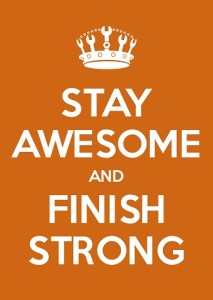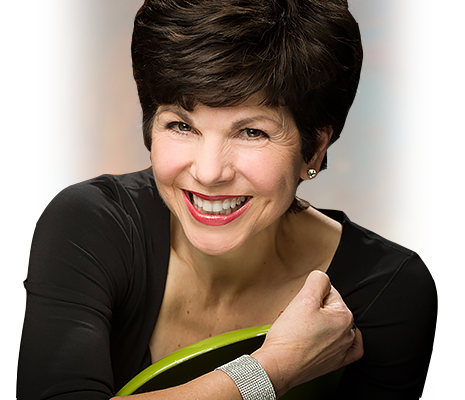
This is the third part of a four-part series exploring the many ways in which you can close your presentations with greater impact. My goal is to motivate you to be more creative and experimental with how you close out your presentations. We’ll look at video examples from TED.com and YouTube and see how other professionals and expert speakers use these closing techniques with success.
If you didn’t see the first two articles in this series, check out what you missed:
Guidelines about presentation closings
In Part 1, we introduced five guidelines pertaining to your closing remarks for a successful presentation.
- Avoid the weak wind-down
- End “naked”
- You get the last word
- Practice your closing remarks ahead of time
- Have a contingency plan
In Parts 1 and 2, we covered the first three of the five guidelines. Now for the fourth guideline:
4. Practice your closings remarks ahead of time. Often presenters will focus on practicing their openings and core content, but run out of time and never actually practice their closing comments. This leaves to chance the last impression, which is certainly a very important impression, that you will make with your audience. Your closing comments, like your opening ones, are most likely to be remembered by your audience because of the law of recency/primacy. HINT: try practicing and rehearsing your presentation in reverse order or random order. Make sure your closing gets as much attention in the preparation process as any other part of your presentation.
There are many different ways in which you could close your presentation. In Parts 1 and 2, we also studied these specific closing techniques:
- The traditional close
- Leave them with a conundrum
- Motivating quote close
- The WWW close
- Physical props to create a lasting visual memory
- Metaphor close
Now, let’s unpack three more closing techniques that you could experiment with in a future presentation:
#7: Inspiring story close
At a Glance: Stories can create strong emotional connections between audience and speaker. They are wonderful platforms for teaching and inspiration. They are also more easily remembered and repeated than facts and figures. Consider using a story to end your presentation. It doesn’t have to be your own personal story, but does have to be a story that has influenced you in a powerful way.
Video Example: Orchestra conductor Benjamin Zander makes a case for the transformative power of classical music in his popular TED.com presentation in 2008. This is an awesome keynote speech that you may wish to watch in its entirety, but if you’d like to fast forward to watch his inspiring story close, go to time code 18:57-20:16.
Transcription: “So now, I have one last thought, which is that it really makes a difference what we say — the words that come out of our mouth. I learned this from a woman who survived Auschwitz, one of the rare survivors. She went to Auschwitz when she was 15 years old. And … And her brother was eight, and the parents were lost. And she told me this, she said, “We were in the train going to Auschwitz, and I looked down and saw my brother’s shoes were missing. I said, ‘Why are you so stupid, can’t you keep your things together for goodness’ sake?'” The way an elder sister might speak to a younger brother. Unfortunately, it was the last thing she ever said to him, because she never saw him again. He did not survive. And so when she came out of Auschwitz, she made a vow. She told me this. She said, “I walked out of Auschwitz into life and I made a vow. And the vow was, “I will never say anything that couldn’t stand as the last thing I ever say.” Now, can we do that? No. And we’ll make ourselves wrong and others wrong. But it is a possibility to live into.”
Coaching Tip for Benjamin Zander: I love your enthusiasm, creativity, and energy. You are the real deal! I’m curious, however, if there could be a way to connect this final story to your topic of classical music, without being too promotional.
#8: Final advice close
At a Glance: Once you have developed rapport with your audience, and they feel that you have their best interests in mind, they will be more open to accepting advice from you. You can leverage this ‘trusted adviser’ status by closing with the final advice closing technique. Be careful not to come off self-serving or arrogant in how you impart your final words of wisdom at the end of your presentation. Be of service to your audience. Give them balanced advice. Put yourself in their shoes and give them something that both makes them feel good, and that helps to grow their careers, businesses, and lives.
Video Example: David Pogue is a New York Times tech columnist and has done a number of high-view TED.com presentations. Watch the closing he uses in his 2006 TED Talk, Simplicity Sells. To observe his closing remarks, advance to time code: 20:40 – 21:09.
Here’s the transcription: “So, my final advice for those of you who are consumers of this technology: remember, if it doesn’t work, it’s not necessarily you, ok? It could be the design of the thing you’re using. Be aware in life of good design and bad design. And if you’re among the people who create this stuff: Easy is hard. Pre-sweat the details for your audience. Count the taps. Remember, the hard part is not deciding what features to add, it’s deciding what to leave out. And best of all, your motivation is: simplicity sells. Thank you very much.”
Coaching tip for David Pogue: You are incredibly creative and funny. I love the way you play to your strengths by incorporating your musical talent into your presentations. I would recommend that you not rush your ending, but rather take your time. If you slow down the rate of your speech by at least twenty five percent, the quality of your close will improve, making your fabulous TED talk even more fabulous. If slowing down proves to be too difficult for you, try a full breath between each of your key points in your final remarks. You can still maintain your energy and personal style, but the quality of your communication will improve with greater vocal awareness. (I know, I know, you are sending me an email thank you letter prompted with your clever voice command of “Piss Off.”)
#9: Call-to-action close
At a Glance: With this closing technique, you have the opportunity to instruct your audience to take specific steps to put into action the ideas and information you have shared. You can even use the language, “call-to-action.” Never give more than three actions, or else your audience won’t be able to remember them. Also, your actions should tie directly back into the content and information you shared during your presentation. Be careful not to confuse your audience by introducing brand new ideas or unrelated calls-to-action into your closing comments.
Video Example: One of my favorite non-fiction authors, Susan Cain, who wrote the book Quiet: The Power of Introverts in a World that Can’t Stop Talking, gives a memorable close in her TED talk from 2012. If you watch this 19-minute presentation from start to finish you will see how she ties back to her opening story about going to summer camp and bringing a suitcase full of books.Watch her closing comments and three calls to action at time code 16:30: 18:37
Transcription:“
So I am going to leave you now with three calls for action for those who share this vision.
Number one: Stop the madness for constant group work. Just stop it. And I want to be clear about what I’m saying, because I deeply believe our offices should be encouraging casual, chatty cafe-style types of interactions — you know the kind where people come together and serendipitously have an exchange of ideas. That is great. It’s great for introverts and it’s great for extroverts. But we need much more privacy and much more freedom and much more autonomy at work, at school, same thing. We need to be teaching kids to work together, for sure, but we also need to be teaching them how to work on their own. This is especially important for extroverted children too. They need to work on their own because that is where deep thought comes from in part.
Number two: Go to the wilderness. Be like Buddha, have your own revelations. I’m not saying that we all have to now go off and build our own cabins in the woods and never talk to each other again, but I am saying that we could all stand to unplug and get inside our own heads a little more often.
Number three: Take a good look at what’s inside your own suitcase and why you put it there. So extroverts, maybe your suitcases are also full of books. Or maybe they’re full of champagne glasses or skydiving equipment. Whatever it is, I hope you take these things out every chance you get and grace us with your energy and your joy. But introverts, you being you, you probably have the impulse to guard very carefully what’s inside your own suitcase. And that’s okay. But occasionally, just occasionally, I hope you will open up your suitcases for other people to see, because the world needs you and it needs the things you carry. I wish you the best of all possible journeys and the courage to speak softly.”
Coaching tip for Susan Cain: I love how you structured your closing (1,2,3) which makes it easier for your audience to track along with you. However, your closing comments are too long. Consider shortening them by either reducing the number of calls-to-action, or trimming the number of words in each. This is important because we won’t be able to do what you ask us to do, if we can’t remember it.
Preview of Part 4
In our final blog post of this four-part series, I’ll expound on the idea of why you should have a contingency plan for your closing remarks (guideline #5). I’ll also share with you the final four presentation closing techniques in this series:
#10 – The question close
#11 – Customer tributes, poems, and musical scores
#12 – Inspiring video or energizing music close
#13 –The gratitude close
Need help with your presentations?
Contact Kathy McAfee, Executive Presentation Coach and Trainer at or email her at Kathy@AmericasMarketingMotivator.com
Check out these professional services available to you and your organization – http://www.americasmarketingmotivator.com/services/motivated-presenters/

